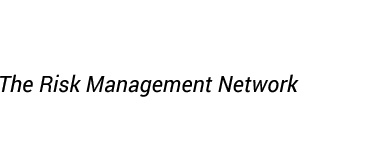As of spring 2025, Europe finds itself at a critical juncture, caught between internal economic fragilities and escalating global geopolitical tensions. The resurgence of US protectionism under the Trump administration, combined with structural imbalances within the eurozone, is forcing policymakers to confront difficult decisions. Amid subdued growth, uneven inflation trends, and mounting trade conflicts, the European economy must recalibrate its strategy. This document explores how these pressures shape the short- and medium-term economic outlook, with a focus on Germany and the euro area.
Global Outlook: US, China, and Trade Disruption
The United States economy, while maintaining momentum in 2024, is expected to decelerate significantly in 2025. Inflation remains elevated, and the Federal Reserve faces the challenge of balancing monetary easing against persistent price pressures. Unemployment remains low, but early indicators such as job postings and wage growth suggest softening. In a radical policy turn, President Trump has reintroduced sweeping tariffs, including a 25% levy on EU imports, and much harsher measures against China. This shift has global repercussions, particularly for export-dependent economies like Germany and Japan, and it introduces volatility in commodity and capital markets.
![Figure 01: US economic growth remains resilient [Source: US Bureau of Economic Analysis, Creditreform Rating] Figure 01: US economic growth remains resilient [Source: US Bureau of Economic Analysis, Creditreform Rating]](/fileadmin/_processed_/1/d/csm_Figure-01_Creditreform_20250408_be6dc6bc25.jpg) Figure 01: US economic growth remains resilient [Source: US Bureau of Economic Analysis, Creditreform Rating]
Figure 01: US economic growth remains resilient [Source: US Bureau of Economic Analysis, Creditreform Rating]
Euro Area: Recovery Amid Divergence
In the eurozone, growth remains lackluster and fragmented. The European Central Bank projects a GDP increase of 0.9% for 2025, marking a continuation of the stagnation that began in 2023. Inflation, while lower than in previous years, remains above target in many member states, especially in the services sector. Divergence among member economies is becoming increasingly pronounced. Spain and Portugal are showing modest but steady improvements, fueled by domestic demand and a rebound in tourism. France and Italy remain mired in low growth, while Germany continues to struggle due to external trade pressures and internal structural weaknesses.
![Figure 02: Heterogeneous growth among Euro-pean major economies persists [Source: Eurostat, Creditreform Rating] Figure 02: Heterogeneous growth among Euro-pean major economies persists [Source: Eurostat, Creditreform Rating]](/fileadmin/_processed_/6/a/csm_Figure-02_Creditreform_20250408_40ab30f514.jpg) Figure 02: Heterogeneous growth among European major economies persists [Source: Eurostat, Creditreform Rating]
Figure 02: Heterogeneous growth among European major economies persists [Source: Eurostat, Creditreform Rating]
Trump's Tariffs: A European Test
The return of US tariffs presents a substantial threat to Europe's external trade position. The automotive sector, a pillar of the German economy, is particularly vulnerable. With over €39 billion in exports at stake, the new 25% tariff on EU car imports represents a major disruption. Moreover, the introduction of 'secondary tariffs' on goods processed through China is threatening to splinter complex European supply chains, especially in electronics and machinery. The EU's ability to mount a unified and strategic response will be crucial for mitigating long-term damage to trade relationships and business confidence.
![Figure 03: Europe's trade with the US has increased since 2021 [Source: Eurostat, Creditreform Rating] Figure 03: Europe's trade with the US has increased since 2021 [Source: Eurostat, Creditreform Rating]](/fileadmin/_processed_/a/a/csm_Figure-03_Creditreform_20250408_3816afd5e5.jpg) Figure 03: Europe's trade with the US has increased since 2021 [Source: Eurostat, Creditreform Rating]
Figure 03: Europe's trade with the US has increased since 2021 [Source: Eurostat, Creditreform Rating]
Geopolitical Risks and Defence Spending
Russia's continued aggression in Ukraine, rising tensions in the Indo-Pacific, and instability in the Middle East have led to a marked increase in defense spending across Europe. NATO members are under pressure to meet or exceed the 2% GDP defense expenditure target. While this spending surge has a potential stimulative effect on economies, it is unlikely to produce immediate benefits due to long procurement cycles and dependence on imports. France and Germany have launched major defense procurement programs, but critics argue that governance challenges and inefficiencies may dampen their effectiveness. Meanwhile, political consensus around military spending remains fragile in several EU countries.
ECB Policy in a Tight Spot
The European Central Bank faces a delicate balancing act. After raising rates aggressively between 2022 and 2024, the ECB began cutting in 2025 as inflation moderated. However, the rate of decline in core inflation remains slow, and wage growth continues to exceed productivity gains. Services inflation – driven by tight labor markets, housing costs, and public transport – remains particularly stubborn. Market participants expect further rate cuts, but the ECB is cautious, concerned about a premature loosening that could reignite inflation or de-anchor expectations.
Germany: Stagnation and Structural Strain
Germany's economic model is under unprecedented strain. The traditional reliance on export-led growth, energy-intensive manufacturing, and global trade integration is being challenged on multiple fronts. Industrial output is declining, business investment is sluggish, and energy costs remain among the highest in Europe. Demographic aging is reducing labor supply, while skilled labor shortages are constraining productivity. The Trump tariffs have severely impacted the German automotive and machinery sectors, further amplifying concerns about deindustrialization and economic decline.
Political Shift and Fiscal Expansion in Germany
The 2025 elections resulted in a center-right CDU/CSU coalition government, bringing a shift in economic policy orientation. The announcement of a €500 billion infrastructure and climate investment package represents a bold fiscal departure, aiming to override the constitutional 'debt brake'. The package targets energy modernization, transportation networks, and digital innovation. It also includes significant subsidies for green technologies and semiconductor production. While the plan has been welcomed by industry groups, execution risks remain high, particularly given Germany's traditionally slow administrative processes.
Structural Weaknesses in Industry
Europe's industrial competitiveness is being eroded by structural weaknesses. High regulatory complexity, energy costs, and fragmented capital markets are limiting innovation and investment. German industry, in particular, is losing ground to international competitors due to high input prices and rigid labor laws. Meanwhile, China's continued expansion in strategic sectors – such as EVs, semiconductors, and renewable technologies – poses a long-term challenge to Europe's industrial base. The EU's efforts to foster technological sovereignty through initiatives like the European Chips Act are important steps, but their impact will take time to materialize.
![Figure 04: Germany's most important trade part-ners in 2024 [Source: Destatis, Creditreform Rating] Figure 04: Germany's most important trade part-ners in 2024 [Source: Destatis, Creditreform Rating]](/fileadmin/_processed_/e/f/csm_Figure-04_Creditreform_20250408_dbaa71a6f0.jpg) Figure 04: Germany's most important trade partners in 2024 [Source: Destatis, Creditreform Rating]
Figure 04: Germany's most important trade partners in 2024 [Source: Destatis, Creditreform Rating]
Energy Transition: Between Ambition and Reality
The EU's goal of climate neutrality by 2050 requires massive investments in clean energy, grid infrastructure, and industrial transformation. Germany, with its 2045 neutrality target, is a key player in this transition. However, rising electricity prices, slow permitting processes, and dependence on imported critical materials are major bottlenecks. Industrial consumers warn that decarbonization without competitive energy supply may lead to deindustrialization. Meanwhile, political divisions over nuclear energy and carbon pricing further complicate the policy landscape.
Housing Market: A Glimmer of Optimism
Amid broader economic stagnation, the housing sector offers modest optimism. Residential property prices have stabilized, and rental growth has accelerated in urban areas, driven by demographic demand and limited supply. The construction sector, however, remains under pressure due to labor shortages, rising material costs, and high interest rates. Government incentives for affordable housing and energy efficiency are helping to sustain activity, but the gap between supply and demand remains significant. If implemented effectively, public-private partnerships in housing could offer both economic stimulus and social relief.
Conclusion: Europe at a Crossroads
Europe's economic outlook is shaped by the convergence of external shocks and internal weaknesses. Structural reforms, green industrial policy, and a rethinking of the EU's fiscal framework are essential to restore competitiveness and resilience. Germany's pivot to fiscal stimulus could mark a turning point – if aligned with deep modernization of infrastructure, education, and innovation systems. At the same time, geopolitical fragmentation, trade disruptions, and demographic shifts will test Europe's capacity to act in unison. The choices made in 2025 may define the continent's trajectory for the rest of the decade.
Download Creditreform Economic Briefs




